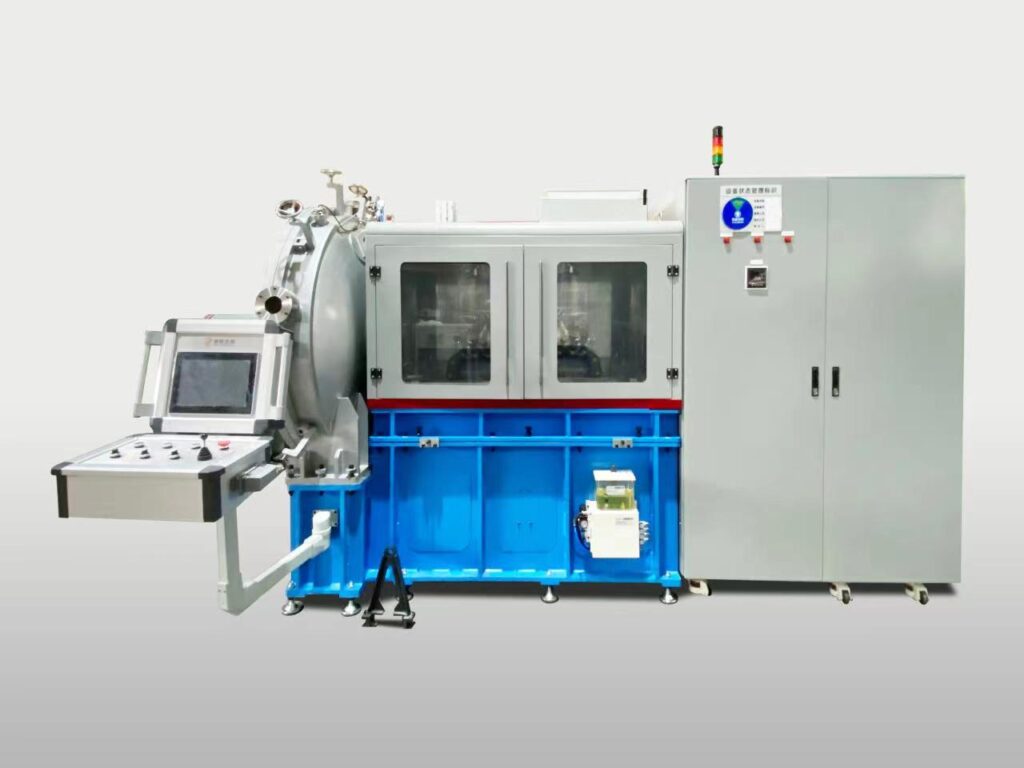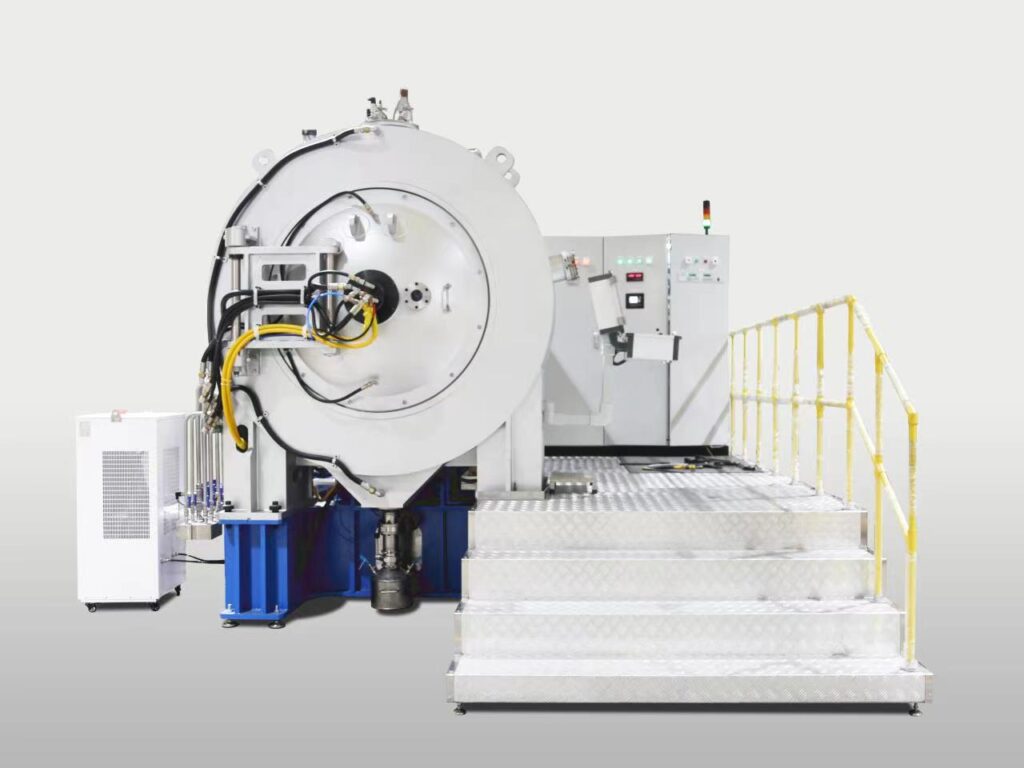Edited based on “STANFORD ADVANCED MATERIALS” (powder.samaterials.com)
The Plasma Rotating Electrode Process is known for its high sphericity and low oxygen content.
The Plasma Gas Atomization is suitbale for preparing metal powders with high sphericity and uniform particle size.
What are the advantages of the Plasma Process?
Plasma powder manufacturing is a relatively new process for the production of powders whereby plasma acts as a heat source to provide energy for metal powders production. Plasma powder manufacturing technology offers significant advantages in the field of metal powder preparation due to its high temperature and high energy density characteristics. The main technological trends with plasma for metal powder manufacturing are Plasma Rotating Electrode Process (PREP), Plasma Gas Atomization (PA) and Plasma Evaporation Condensation at present.
1. High Purity
During the plasma powder manufacturing process, materials are processed in an inert gas environment (such as argon or helium), avoiding contact with reactive gases like oxygen, vapour. This significantly reduces oxidation and contamination of the powder.
2. High Sphericity
Plasma powder manufacturing methods, such as plasma atomization and plasma rotating electrode process, can produce powder particles with high sphericity.
3. Suitable for Various Materials
The plasma process can handle various materials, including metals, alloys, oxides, nitrides, carbides, and composite materials, making it highly versatile. This process is particularly suitable for preparing materials that are difficult to process by traditional methods.
4. Nanometer-Scale Powder Preparation
Processes such as plasma evaporation and condensation can prepare nanometer-scale powders.
5. Flexible and Controllable
By adjusting plasma parameters (such as temperature, gas flow rate, spray gun position, rod rotating speed, etc.), the particle size, shape, and purity of the powders can be flexibly controlled to meet different application needs.
Plasma Rotating Electrode Process (PREP)
The Plasma Rotating Electrode Process can be divided into three main steps:
(1) Metal or alloy is made into a rod of specific dimensions and then mounted into a rotating fixture/spindle.
(2) The plasma gun is moved in front of the rod, and under the action of the plasma beam, the end of the rod begins to melt.
(3) The liquid metal is broken into droplets due to the dual effects of centrifugal force and surface tension and flies off the electrode rod, finally cooling and solidifying into spherical metal powder.

Fig 1. Plasma Rotating Electrode Process
This method has incomparable advantages over other powder-making techniques in preparing spherical metal powders with ultra-low interstitial element content. The metal powder produced has high sphericity, low satellite powder, and almost no hollow powder.
As the power of powder-making equipment increases, and the core components of rotation and control improve, the materials processed by plasma rotating electrode technology have expanded from titanium alloys, high-temperature alloys, and stainless steel to aluminum alloys, magnesium alloys, refractory metals, precious metals, and intermetallic compounds.
Due to the excellent quality of the powder produced by this technology, its application in advanced manufacturing techniques (such as hot isostatic pressing and additive manufacturing) is becoming increasingly widespread. It is also gaining significant applications in nuclear, aerospace, and biomedical fields.

Fig 2. Refractory metal spherical powders prepared by PREP: (a) tungsten powders; (b) molybdenum powders; (c) tantalum powders; (d) niobium powders
Such high quality metal powders mentioned above can be produced by our (Shanghai Truer) SLPA-D30 و SLPA-D50 equipment.

Fig.3 PREP equipment: SLPA-D30

Fig. 4 PREP equipment: SLPA-N50
Plasma Atomization (PA)
Plasma atomization can also be divided into three steps, ensuring the powder’s high sphericity and uniform particle size distribution throughout the process.
(1) Metal or alloy is made into wires or thin rods of specific dimensions and then fed into a plasma spray gun.
(2) The metal wire gradually melts under the high temperature of the plasma spray gun.
(3) The molten metal droplets are atomized into fine droplets under the impact of high-speed gas flow. These droplets rapidly cool and solidify in the inert gas, eventually forming spherical metal powder.

Fig 5. Plasma Atomization
This method offers unrivaled advantages over other powder-making technologies in producing metal powders with high sphericity and uniform particle size. The powder particles produced by this method are uniform, smooth in surface finish, controllable in size, and almost free from agglomeration. Because the molten metal does not contact the crucible or other components during atomization, the purity of plasma atomized powder is also higher.
Thus, compared with other methods, plasma atomization produces powders with higher purity and lower oxygen content, making it ideal for applications that require high material purity. Plasma atomization is a unique process for producing active metal spherical micro powder. Compared with other methods, for Titanium alloys, plasma atomization produces finer powders with an average size of 40μm, while gas atomization averages 80μm, rapid solidification averages 65μm, and the rotating electrode method averages 150μm. Its size range is also narrower, comparable to rapid solidification atomization and narrower than powders produced by gas atomization and the rotating electrode method.
Due to the finer nature of plasma atomized powder, components produced from it will exhibit excellent physical and mechanical properties. In high-tech fields such as aerospace, nuclear industry, and biomedical, metal powders prepared by plasma atomization have become indispensable materials because of their outstanding performance and high purity, driving technological development and innovation.
Plasma Evaporation Condensation
Plasma evaporation condensation has unique advantages in preparing nanometer-scale powders. The process of forming powder by this method involves the following steps:
(1) Inject solid particles into an inert gas plasma.
(2) Under the high temperature of the plasma, the solid particles are completely evaporated and exist in vapor form.
(3) Rapid cooling is achieved using a gas quenching technique, causing the saturated vapor to quickly condense, nucleate, and grow to form ultrafine powder.

Fig 6. Plasma Evaporation Condensation
This method has significant advantages in producing high-purity nanometer-scale powder. The powder prepared by this method has a small particle size, uniform distribution, high purity, and good sphericity. Additionally, plasma evaporation condensation can generate powder particles with almost no agglomeration, which is suitable for applications where high powder quality is required.
As plasma equipment and process technology advance and develop, plasma evaporation condensation can now be used to prepare nanometer-scale powders of various materials, including but not limited to:
- Metals and Alloys: Such as titanium alloys, nickel-based alloys, tungsten, molybdenum, etc.
- Metal Oxides: Such as alumina, titania, zinc oxide, etc.
- Metal Nitrides and Carbides: Such as silicon nitride, tungsten carbide, etc.
- Composite Materials: Diverse composite materials for functional applications.
Because of the excellent characteristics of the nanometer powder prepared by plasma evaporation condensation, this technology is widely used in catalysts, electronic materials, coating materials, biomedical applications, energy storage devices, and other fields. Especially in the nuclear, aerospace, and biomedical industries, the powder materials prepared by this method show great potential, providing vital support for these high-tech fields.
How to Choose
As shown in Table 1, each method has its unique advantages and suitability. The specific choice depends on the nature of the material to be prepared and the application requirements.
The Plasma Rotating Electrode Process is known for its high sphericity and low oxygen content and it is suitable for producing high-quality metal powder. It is widely used in aerospace, nuclear industries, and biomedical fields. The process is moderate in complexity but requires high-end equipment.
Plasma gas atomization is suitable for preparing metal powders with high sphericity and uniform particle size. It is widely used in additive manufacturing and powder metallurgy. The process is relatively simple and suitable for large-scale production.
Plasma Evaporation Condensation focuses on preparing nanometer-scale powders, ideal for high-tech applications such as catalysts and electronic materials. The process is complex and energy-intensive, but the powder purity is extremely high.
Table 1. Plasma Rotating Electrode Process vs Plasma Gas Atomization vs Plasma Evaporation Condensation

Conclusion
Choosing the right plasma powder manufacturing process depends on the specific requirements of your project. Plasma processes offer unmatched advantages in purity, sphericity, and versatility. As technology continues to evolve, plasma powder manufacturing methods are becoming increasingly integral to various industries, from aerospace to biomedical. The future of material science is bright, with plasma processes leading the way in innovation and efficiency.
Shanghai Truer has been committed to providing high-performance PREP equipment for metal powders production and high-quality metal alloy powders to our valued clients in many fields. We have three models of PREP equipment, named SLPA-D30, SLPA-N50 و SLPA-N75. Our main spherical metal powders include stainless steel, titanium, aluminum, cobalt, refractory metal/alloys, copper and nickel alloy powders. These products meet the diverse manufacturing needs across various Powder Metallurgy (PM) technologies, such as Additive Manufacturing (AM), Hot Isostatic Pressing (HIP), and Metal Injection Molding (MIM), and surface technology, such as cold spraying, hot spraying, coating, etc.
